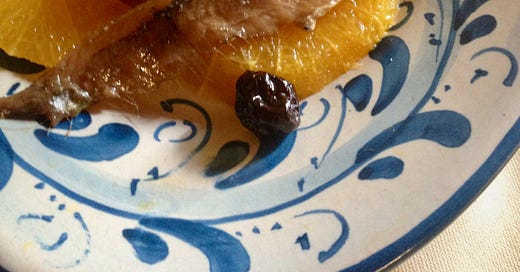Sicilian orange salad: a surprising combination of oranges, black olives & anchovies
IT’S a dull time of year, these gray late February days on the shores of the North Atlantic when a hint of spring has yet to arrive, the air is still frigid, the earth is covered with gritty old snow, and a leaden sky lowers over all. That’s why nature gives us citrus…
Keep reading with a 7-day free trial
Subscribe to On the Kitchen Porch to keep reading this post and get 7 days of free access to the full post archives.




